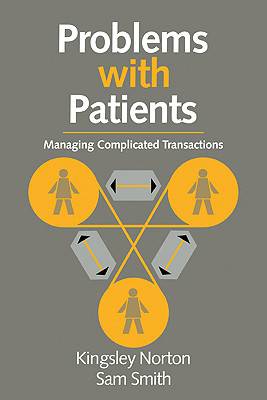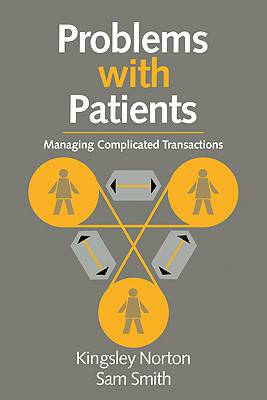
- Afhalen na 1 uur in een winkel met voorraad
- Gratis thuislevering in België vanaf € 30
- Ruim aanbod met 7 miljoen producten
- Afhalen na 1 uur in een winkel met voorraad
- Gratis thuislevering in België vanaf € 30
- Ruim aanbod met 7 miljoen producten
Zoeken
Problems with Patients
Managing Complicated Transactions
Kingsley Norton, Sam Smith
Paperback | Engels
€ 100,95
+ 201 punten
Uitvoering
Omschrijving
When patient meets doctor, as well as engaging in a transaction with a clinical purpose, they react to one another as people. Their personalities and ability to form relationships in general also affect the professional interaction. As with other relationships, things can go wrong. The outcome of the consultation may not be what either individual hoped for or intended. Norton and Smith explore the factors that can cause problems in the doctor-patient relationship. Within a model studied from three theoretical perspectives, the authors emphasize the often unconscious personal aspects of the doctor-patient interaction, and offer concrete advice to help doctors manage their dealings with patients. This fresh look at an important but often neglected aspect of health care will be vital reading for all doctors, psychiatrists, clinical psychologists, social workers, medical students, health care administrators, and patients' rights advocates.
Specificaties
Betrokkenen
- Auteur(s):
- Uitgeverij:
Inhoud
- Aantal bladzijden:
- 196
- Taal:
- Engels
Eigenschappen
- Productcode (EAN):
- 9780521436281
- Verschijningsdatum:
- 26/08/1994
- Uitvoering:
- Paperback
- Formaat:
- Trade paperback (VS)
- Afmetingen:
- 152 mm x 228 mm
- Gewicht:
- 272 g

Alleen bij Standaard Boekhandel
+ 201 punten op je klantenkaart van Standaard Boekhandel
Beoordelingen
We publiceren alleen reviews die voldoen aan de voorwaarden voor reviews. Bekijk onze voorwaarden voor reviews.











